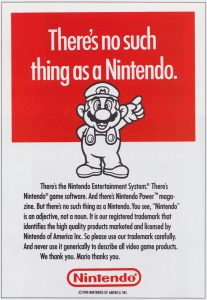This is the fifth installment in a six-part series featuring four artists playing Inter/de-pend-ence: The Game, a dialogue-based game exploring cooperation, competition, and other themes of mutual support.
Catch up with the introduction, or find the previous round here.
You can play Round Five: Majorities by downloading a PDF or drawing cards online.
Ronny Quevedo, Answerer
Ronny draws the Question Card, “How much do you think the current existing country (art world) serves the majority of residents (artists)?”
No. {laughs} It’s funny. I think both those concerns reflect each other. I don’t think that the country serves a majority of residents. There’s just a huge ignorance to what actually makes up the country. I think for the most part people are underserved in a variety of capacities, not just socially but culturally. Having said that, if the art world is supposedly leading the cultural legacy, it’s trying to rectify it, but still has a lot more to do—in regards of physical representation, and also in terms of how it serves artists. Not just giving them the opportunity to to make their work, but if artists are generally involved in reaching your community—how does the art world serve the audience that the artist is trying to represent? I think they’re both hand-in-hand. I think both of them are really ill-informed at the moment, and slowly trying to rectify it. In terms of artists specifically, I would say there’s still like a lot of work to do.
Malcolm Peacock, Concretizer
Yeah—no and no. I think people are not clear, or maybe don’t even want to know what is a majority… what is the make up, who is here, who has been here.
Deana Haggag (president of United States Artists) and I are friends from Baltimore and she talks a lot about something that I really deeply care about: A desire to tell stories of artists (tons of artists, different artists), especially artists that are making work about things that are really relevant, important, and necessary to our existence, like the environment, incarceration, or our food. Her company did a big survey and found that over 80% of people in the United States care about art, the legacy of art, and the significance of art, and believe it is a good thing that can cause historical change. A number in the teens of those same people surveyed care about individual artists. I think that disconnect happens and there’s not enough spaces—I’m not just talking about physical spaces—for people to learn about individual artists. I think the government doesn’t want a liberated state or a liberated body of people. It’s been proven that art is a practice that can liberate people. So, of course, in this type of state, where we have this very dictator-looking thing, then there’s probably not going to be a relationship between the government and the art world to promote art on a scale that could change the world.
I think artists, art contexts, and the art world are largely at fault for being complacent in a system of capital, or a market, or schools… for being complacent in the types of structures and things that can be designated as art. That limits the types of artists that… all of us see. In general, for me, it’s a constant process of seeking: trying to find artists who I don’t know, that care about things that I care about, or care about things that I don’t know that I care about yet, because it’s so easy to get looped up in seeing the same names that I enjoy already.
This is going to be tangential: I think that the art world is the place where we could be more open. I think spaces like this—right now, this conversation—is a creation. It’s a great artwork because it’s creating a space for us to wonder—and I think that’s actually the key thing. There’s too much focus on what exists. There’s not enough focus on wonder, or seeking the possibility of something else. It’s pretty stagnant.
I want to make a quick comment about two articles on Artsy. Two years ago, Artsy produced an article about black artists, curators, and writers and at the end Lowery Stokes Sims talks about how black artists are finally getting attention and showing in galleries and museums, but the next challenge will be curation. There needs to be black and brown people in museums involved in the processes of exhibiting this work. (I’ve been wondering when the article about that is going to come out.) What came out a few days ago was an article about capital’s relation to black artists—all that is super important and very valid. The end of the article addresses, in three short paragraphs, Project Row Houses and other black-artist-initiated projects that aren’t reaping capital benefit. That is where I am talking about wonder; that area of the arts for a marginalized body to exist, that makes space for somebody that is not a black figurative painter to have their work recognized. I think we are still super far from that.
Torreya Cummings, Tactician
Torreya draws the Tactics Card, “Find the productive tension.”
There is certainly tension between the arts and the art world and the government…and then there’s tension between what is and what could be, or what has been and what could be.
A lot of people I know are working with the last one: what is and what could be…trying to imagine the future and what you know, trying to get out of a dynamic where it’s all about resistance—moving into something that could be looking past that and into: “What do you want?” and “How can you make it that way?” A lot of this is happening on smaller scales. Maybe it’s not, “This piece is going to change the world,” but maybe it will foster a conversation like we’re having here, like Malcolm mentioned.
Whether it’s productive tension or just the thing we kind of deal with all the time and work in spite of it, I’m not really sure—but people do keep producing.
I think, to some degree, resistance reinforces the thing that you’re resisting. It’s really hard to get out of that dynamic, especially when there is so much to actively combat, but I would like to leave some space for trying to impact our smaller corners of things. I hope that there’s some sort of aggregate, finding—maybe not productivity, that’s such a capitalist perspective—some generative tension.
Christine Wong Yap, Summarizer
Ronny started out with, “How much do you think the current existing country (art world) serves the majority of residents (artists)?” He said, “No,” for both. There’s a strong disconnect about whose counted, whose visible, and how this country supports artists. I think Malcolm agreed, saying a few different things. One was about a survey by United States Artists. There was a disconnect where 80% of the responders said they supported the arts for different reasons, and as a catalyst for historical change, but when they asked them how many of them actually support individual artist, it was a lower number in the teens. But art doesn’t happen without individual artists. Then he talked about an article in Artsy from Lowery Stokes Sims about diversity, and I think this topic has been getting more visibility, especially in New York with the city’s cultural plan.
Then there’s capital, and how it’s needed to support artists, but you don’t want the mindset that everything is a transaction. There was a through-line between what Torreya and Malcolm said about what exists and what is possible, what is versus what could be. To open yourself to wonder, to things that don’t fit in the art world, like Project Row Houses. Then, in the same way, in terms of activism: What are the limits of resistance? and How much does that reinstate? Reframing productive tension as generative tension.
Inter/De-pen-dence game play, Round Six: Reflection, will post next week—come back and play along!







